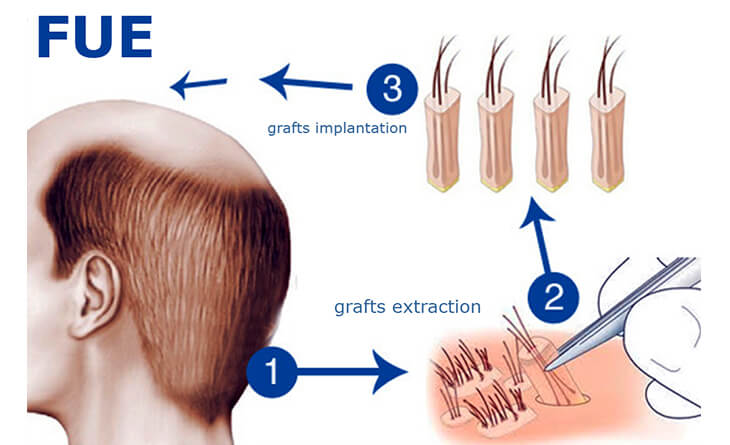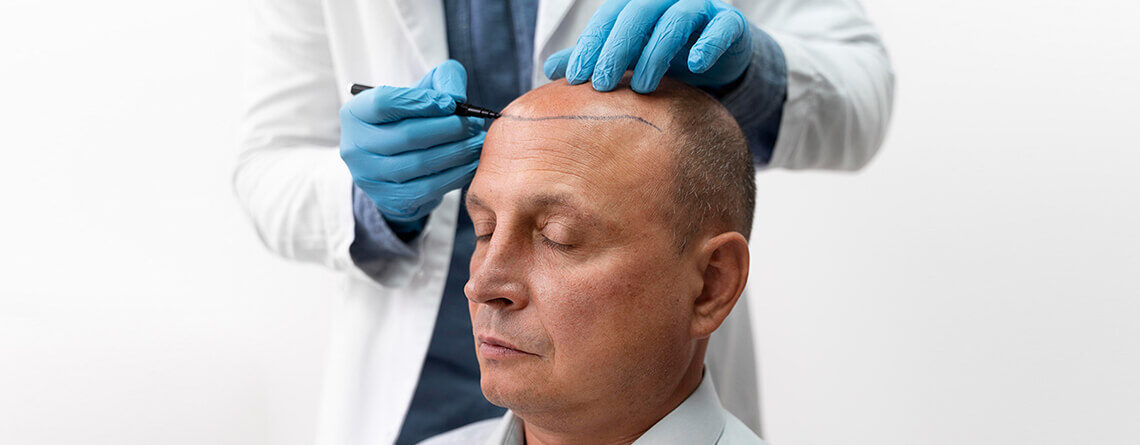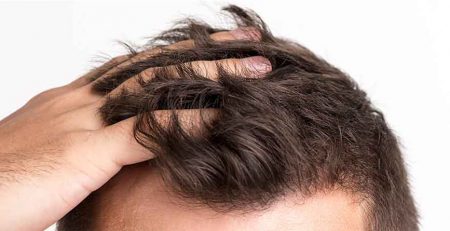What Are The 2 Types Of Hair Transplant?
Many people still find hair transplant surgery, or hair transplants as we commonly refer to them, to be a mystery.
E-commerce, other grooming standards, accelerated socio – economic growth, the growing impact of social media, a greater appreciation for the value of appearance, and personal appearance are all emerging as possible market drivers for hair transplants.
Due to the blending of various cultures, ideas, practises, and beliefs, consumers are now more self-aware and outspoken about their own health and wellbeing struggles thanks to new-age media platforms.
Looking good has come to be associated with confidence and is no longer just for festivals or special situations. Therefore, this blog will help you understand about the 2 advanced types of hair transplant procedure along with DHI technique to make you look confident and smart.
Types of Hair Transplant Procedure
To aid in the regrowth of lost hair, numerous hair transplant procedures have been created. The two most popular approaches are follicular unit transplantation (FUT) and follicular unit excision (FUE hair transplant).
During FUT, a surgeon removes individual hair follicles one at a time by cutting a strand of hair from the back of your head. Additionally, the surgeon removes follicles from your scalp immediately.
The follicles are inserted into the areas of your head that are balding during both procedures. The DHI Global Medical Group company modified the FUE procedure to develop direct hair implantation (DHI). They employ a highly specialised pen-shaped tool for DHI that can perform the two tasks concurrently.

Have questions or want to get started? We are ready to help you with a smile!
FUE Hair Transplant Approach
FUE hair transplantation technique is considered as an improved hair transplant method. Individual follicular units, each containing one to four hair follicles, are removed here. A micro hair reduction tool is used during the extraction procedure. Additionally, the surgeon employs 0.6mm and 1.0mm diameter microblades and needles for punctures and extraction processes. It requires time, accuracy, and precision to complete this process.
To remove 200 hair cells, the procedure typically requires two to three hours. The hair follicles are extracted, punctured, and then implanted on the target area by the surgeon. The surgery’s tiny puncture heals fast and does not leave a scar. It does, however, require time. The procedure may require two to three rounds, depending on how many hair grafts are used.
What to anticipate post FUE hair transplant treatment?
FUE has a fast recovery time. For about three days, you might experience some swelling or pain.
Here are some recommendations for aftercare that your doctor might offer you:
- Don’t take a shower or wash your tresses for at least three days.
- Once you begin shampooing your hair, use mild, fragrant shampoos for a few weeks.
- Take a few days off from work to hasten the mending process.
- For at least 3 weeks, avoid using a comb or brush on your new hair.
- Till your doctor gives the all-clear, avoid donning hats, beanies, or any other items of clothing that cover your scalp.
- Don’t engage in any vigorous exercise for at least a week.
It’s possible that some hairs will come out as the wound heals. That is commonly found. After 3 to 4 months, you’ll definitely start to see a difference.
Your hair may not regrow as thickly as anticipated depending on the condition of your transferred hair.
FUT Hair Transplant Procedure
One of the older and more established hair replacement methods is follicular unit transplantation. This entails removing a lengthy, thin strip of scalp, either from the back or bottom of the head. There are numerous hair follicles on the strip, which are then split into individual hair units. The donation area is sewn. This leaves a mark in its wake. However, since the extraction stage moves more quickly, it takes less time.
When performing a follicular unit transplant (FUT):
- The backside of the scalp will have a strip of head skin removed by the surgeon using a scalpel. Usually, the cut is several inches long.
- After that, stitches are used to close it.
- The surgeon then uses a surgical knife and a magnifying glass to cut the small sections of the scalp that were removed. These sections, when implanted, will aid in achieving hair growth that looks natural.
Ideal candidate for FUT hair transplant procedure.
Male pattern baldness, also known as androgenic alopecia, is the finest type of baldness in which to undergo FUT. This disease frequently manifests in men as the Norwood sequence or an M-shaped hairline with temple hair loss.
The Ludwig pattern, which results in hair loss along the hair part or loss at the top of the head, is typically experienced by women with this disease. FUT surgery is probably not a possibility if a medical condition, such as a thyroid disorder or alopecia areata, is the reason for your hair loss.
Following people with the respective condition can be ideal for hair transplant procedure:
- Women who experience a generalised trend of scalp hair loss tend to choose hair transplant for women
- People who lack sufficient “donor” hair sites from which to harvest hair transplants
- Individuals with keloid scars (thick, fibrous scars) following operation or injury
- Individuals whose hair loss is brought on by a drug like chemotherapy
DHI (Direct Hair Implantation) Approach
It uses a similar process and is a modified form of FUE hair transplant. In balding areas, your surgeon will eliminate hair follicles from a region of your scalp, typically the backside of the head. New hairs will eventually grow from these hair follicles.
Here is what to anticipate during the entire procedure:
- Your physician will trim your hair and numb it with local anaesthesia before shaving it.
- Using a tool with a fine tip, the surgeon will remove hair follicles from the back of your scalp.
- The hair follicles will be inserted into the balding area of your scalp using a pen-shaped tool.
- All areas will be bandaged and an antibiotic cream will be applied by the surgeon.
The length of time required to complete FUE and DHI procedures depends on how many hair follicles are being transplanted, but the exact time can differ. To fully appreciate the effects of the procedure, it may take 12 to 18 months.
To assist you in making a choice, it is highly advised to review the before-and-after results of prior dermatologists and patients and contact the surgeon.

Difference between FUE and FUT Hair Transplant Procedure
How the hair is extracted is the key distinction between a FUE hair transplant and a FUT hair transplant. The removal of a strip of hair from the back of the head during a FUT hair transplant leaves a linear scar, meanwhile the separation and transplantation of individual follicular units during a FUE hair transplant leaves much less overall scarring — a FUE scar will resemble a tiny dot.
After receiving a FUT hair transplant, many patients may want to let their hair grow longer in order to hide linear marks. Although this will vary depending on the patient and the total quantity of hair being transplanted, FUT hair transplants typically take less time than FUE hair transplants.
Which type of Hair transplant procedure is best for you?
In your consultation with your surgeon, your surgeon will go over a number of variables that will determine whether you should get a FUE hair transplant or a FUT hair transplant. People who need more hair grafts because their hair is thinning more severely are frequently better candidates for a FUT procedure because FUT grafts typically produce more follicles for transplantation.
On the other hand, FUE transplants might be more suitable for those who only need a few grafts or who want to resume their regular activities quickly after their transplant because the recovery period following a FUE treatment is frequently shorter because it is less invasive.
Summing Up!
When it comes to treating hair loss, hair transplants are much more effective than other non-surgical methods like over-the-counter remedies. Within four months, patients can anticipate that 10% to 80% of the transplanted hair will have completely grown back, but it’s important to note that, like natural hair, the grafted hair will shrink over time.
Despite the fact that hair transplant procedure for women and men are largely effective, there is no guarantee they will be, and the patient ultimately determines how well the process goes. People with dormant hair follicles, people with more extensive thinning and balding, people who have lost hair as a result of chemotherapy, and people with very thick marks on their scalp may have less luck with transplants.
The patient and their intended outcome, as well as a number of other factors, play a significant role in determining the benefits and drawbacks of each procedure.
In order to decide which procedure is best for your transplant requirements, being a board-certified plastic surgeon, Dr Rajat Gupta will speak with you and evaluate the number of grafts required, the condition of the donor’s hair, and the quantity of donor hair available.
He is well-known as facilitating the most natural looking desired results in the realm of plastic and cosmetic surgery.
Dr. Rajat Gupta
MBBS, MS, DNB(Gen. Surg.),
DNB (Plastic Surgery)
Dr. Rajat Gupta is a board certified plastic surgeon in India with 15 years of experience to back his expertise in the domain of aesthetic surgeries.
Having completed his training from Maulana Azad Medical College and equipped with a thorough understanding of aesthetic needs of people, Dr. Gupta strives to offer the best remedies and cosmetic procedures outfitted with the latest technology to the aspirants in India and across the globe. To book an appointment, call: +91-9251711711 or email: contact@drrajatgupta.com








